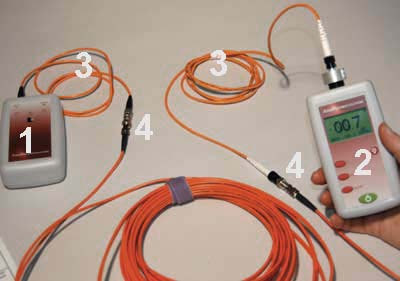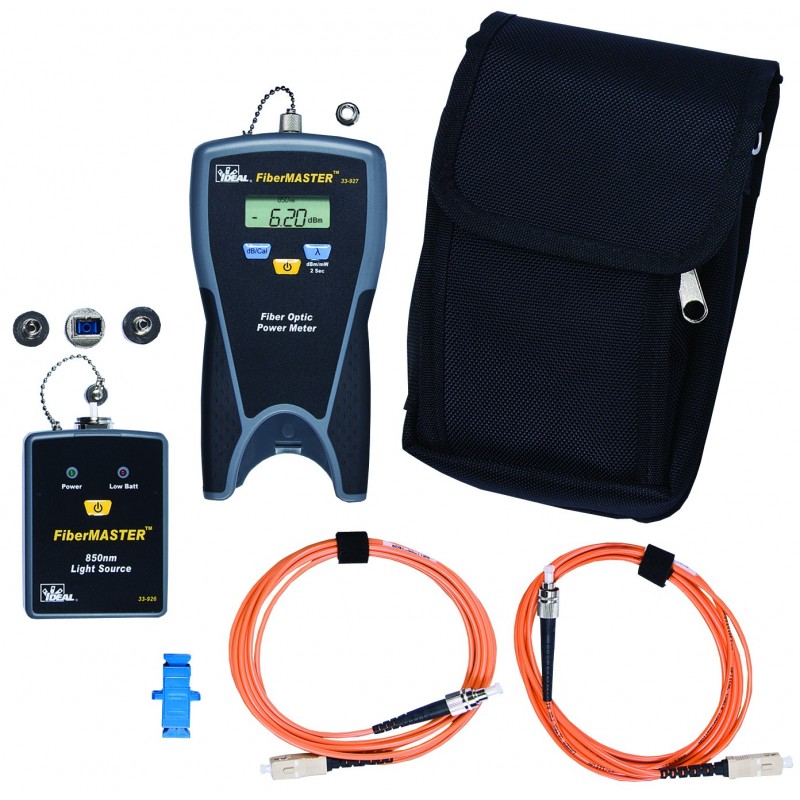OFDA Systems for Advancing Fibre Analysis in Manufacturing Processes
Wiki Article
Essential Features to Search For in Optical Fiber Screening Tools
When assessing optical fibre screening equipment, several vital features necessitate careful consideration to make sure optimum efficiency and integrity. Compatibility with existing market criteria improves performance, while advanced dimension abilities, consisting of TDR and OTDR testing, offer crucial insights into network integrity. Understanding these features will lose light on just how to choose the ideal devices for your certain needs.Accuracy and Accuracy
Precision and precision are essential criteria in the analysis of optical fiber testing equipment. These two characteristics make certain that measurements mirror the real performance of fibre optic systems, which is crucial for reliable network installment, maintenance, and troubleshooting. Accuracy refers to the distance of a determined value to the real worth, while accuracy signifies the repeatability of measurements under unchanged problems.When selecting optical fiber testing tools, it is vital to take into consideration tools that offer high accuracy and accuracy to reduce mistakes in data interpretation. Instruments such as optical time-domain reflectometers (OTDRs) and power meters must have calibration systems to guarantee consistent efficiency in time. In addition, the requirements given by suppliers ought to detail the equipment's measurement uncertainty, which directly affects the integrity of examination outcomes.
Moreover, the efficiency of optical fiber screening tools can be affected by ecological factors, such as temperature and humidity. Choosing tools designed to mitigate these variables will enhance dimension fidelity. In conclusion, buying optical fiber screening tools with durable precision and accuracy functions is fundamental for maintaining optimum network efficiency and ensuring the honesty of fiber optic communications.

User-Friendly Interface
The effectiveness of optical fibre testing equipment is not exclusively figured out by its accuracy and precision; an easy to use user interface plays a considerable duty in improving operational effectiveness. A well-designed user interface simplifies the communication in between the technician and the equipment, enabling for an extra intuitive understanding of complicated functions.Trick features of an easy to use user interface consist of clear navigation food selections, logical layouts, and easily accessible controls. These components make it possible for specialists to do examinations quickly without extensive training, decreasing the likelihood of customer error - ofda. Additionally, visual indications such as development bars, signals, and graphical depictions of information can considerably improve the user experience by providing immediate feedback on the screening procedure.
In addition, personalized settings can better simplify procedures by allowing customers to change criteria according to specific testing needs. This versatility not just saves time however also ensures that the devices satisfies diverse application needs.
Incorporating help attributes, such as tooltips and detailed manuals, into the interface can further equip individuals, promoting self-sufficiency and confidence in running the devices. Eventually, an user-friendly interface is crucial for taking full advantage of the possibility of optical fibre screening tools, resulting in extra effective and efficient testing outcomes.
Portability and Toughness
Transportability and longevity are essential attributes of optical fibre testing tools, ensuring that it can stand up to the rigors of numerous environments while continuing to be easy to transport. Professionals often function in varied setups, from telecoms centers to remote setups, making it crucial that screening devices are light-weight and compact (ofda). Equipment made with transportability in mind typically includes ergonomic takes care of and instances that facilitate effortless motion, hence boosting functional performance on-siteToughness is similarly vital, as optical fibre screening tools is often exposed to extreme conditions, including temperature variations, dampness, and physical influences. Devices constructed with tough products such as strengthened plastics or metal housings are better suited for these settings, lessening the danger of damage during usage and transportation. Additionally, equipment with water and dirt resistance ratings, such as IP ratings, ensures reputable efficiency in difficult conditions.
Compatibility With Specifications
Guaranteeing compatibility with sector standards is vital for optical fibre testing equipment, as it directly influences the dependability and validity of examination outcomes. Optical fiber networks undergo rigorous performance requirements established by numerous organizations, including the Telecoms Sector Organization (TIA) and the International Electrotechnical Commission (IEC) Evaluating equipment has to stick to these criteria to guarantee that dimensions correspond and similar across various systems and atmospheres.
When selecting optical fiber screening equipment, individuals need to confirm that the tool meets pertinent criteria pertinent to their certain application, such as those pertaining to attenuation, data transfer, and crosstalk. Devices that is certified with well-known requirements not only aids in accomplishing accurate outcomes but also helps with interoperability amongst tools from various producers.
Furthermore, compatibility with criteria makes sure that the devices can be made use of in regulatory compliance circumstances, which is crucial for tasks in fields such as telecoms, aerospace, and military applications. Investing in optical fibre testing tools that aligns with current sector criteria is a basic facet of maintaining quality assurance and achieving optimal network efficiency.
Advanced Dimension Capacities
Advanced measurement abilities are a specifying attribute of contemporary optical fiber screening equipment, permitting thorough evaluation of network performance. These capabilities make certain that technicians can assess crucial parameters such as signal loss, diffusion, and transmission capacity, which are essential for preserving optimal communication efficiency.One secret aspect is the ability to perform time-domain reflectometry (TDR) and optical time-domain reflectometry (OTDR) tests. These strategies allow users to recognize faults, gauge the size of fibers, and establish the area of issues with impressive precision - ofda. Sophisticated equipment often includes the ability to measure optical power levels, helping to examine the overall health and wellness of the network and make certain compliance with the needed specs.
Additionally, some testing tools supply sophisticated algorithms for real-time evaluation, allowing quicker medical diagnosis and troubleshooting. This is especially crucial in high-speed networks where downtime can result in substantial monetary losses. With the combination of advanced software application interfaces, users can imagine information better, helping with informed decision-making. In verdict, investing in optical fibre screening equipment with advanced measurement capabilities is crucial for guaranteeing network dependability and efficiency optical fibre testing equipment in today's requiring telecoms landscape.
Conclusion

Report this wiki page